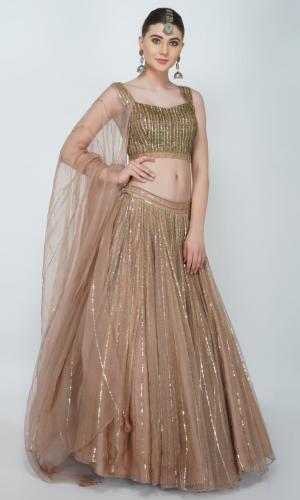10 Expert Tips to Capture Stunning Product Photography by NibbleandPixel

Introduction to product photography
As a professional photographer, I understand the
significance of captivating visuals in today's highly competitive market.
Product Photography, in particular, has become an essential aspect of modern
marketing strategies, serving as a powerful tool to showcase products in their
best light and entice potential customers. In this comprehensive guide, I will
share my expert insights and provide you with a wealth of knowledge to elevate
your product photography to new heights.
Product photography is an art form that combines technical
expertise, creative vision, and a deep understanding of the product itself.
Whether you're a seasoned professional or an aspiring enthusiast, mastering the
art of capturing stunning product images can be a game-changer for your
business or brand. With the right techniques and a keen eye for detail, you can
transform ordinary products into visually captivating masterpieces that
resonate with your target audience.
Importance of high-quality product photography
In the digital age, consumers are bombarded with countless
product options, making it crucial for businesses to stand out from the crowd.
High-quality product photography plays a pivotal role in capturing the
attention of potential customers and conveying the unique qualities of your
offerings. Well-executed product images not only showcase the product's
features and benefits but also evoke emotions and create a lasting impression.
Furthermore, with the rise of e-commerce platforms and
social media marketing, product photography has become a critical component of
online sales strategies. Compelling visuals can significantly influence
consumer behavior, increasing click-through rates, and conversions, and ultimately
driving revenue growth.
Top 10 tips for stunning product photography
To help you elevate your product photography skills, I have
curated a comprehensive list of expert tips that have proven invaluable in my
own practice. These tips cover a wide range of aspects, from lighting
techniques and background selection to composition, styling, and
post-processing. By implementing these strategies, you can unlock the full
potential of your product images and create visuals that truly captivate your
audience.
Tip 1: Lighting techniques for product photography
Proper lighting is the foundation of any successful product
photography shoot. It has the power to showcase the product's textures, colors,
and intricate details, or conversely, to obscure them. I recommend
experimenting with various lighting setups to find the one that best suits your
product.
Natural Light: Whenever possible, take advantage of
natural light. It can create a warm and inviting ambiance, adding depth and
dimension to your images. Position your product near a large window or use
reflectors to bounce the light onto the subject.
Continuous Lighting: Continuous lighting sources,
such as LED panels or softboxes, offer consistent and controllable
illumination, making them ideal for product photography. They allow you to
preview the lighting setup in real time and make adjustments as needed.
Strobe Lighting: Strobe lights, or flash units,
provide intense bursts of light, freezing motion and creating crisp,
well-defined shadows. They are particularly useful for capturing intricate
details and achieving a dramatic, high-contrast look.
Remember, the key to successful lighting is understanding
how light interacts with your product's shape, texture, and color. Experiment
with different light sources, modifiers, and angles to achieve the desired
effect.
Tip 2: Choosing the right background for your product
The background you choose for your product photography can
either enhance or detract from the subject itself. A well-chosen background can
create a cohesive and visually appealing image, while a poorly selected one can
be distracting and diminish the impact of your product.
Solid Backgrounds: Solid-colored backgrounds, such as
white, gray, or black, provide a clean and minimalistic look, allowing your
product to take center stage. They are versatile and can be easily manipulated
in post-processing to achieve different effects.
Textured Backgrounds: Textured backgrounds, like
wood, concrete, or fabric, can add depth and interest to your images. They can
also help create a specific mood or atmosphere that complements your product's
style and branding.
Environmental Backgrounds: For certain products,
showcasing them in a relevant environment can help tell a compelling story and
create a sense of context. For example, outdoor gear could be photographed in a
natural setting, while kitchen appliances might be best displayed in a kitchen
setup.
Remember, the background should complement your product
without overpowering it. Consider the product's color, texture, and overall
aesthetic when selecting the appropriate background.
Tip 3: Composition and framing in product photography
Composition and framing are crucial elements in creating
visually striking product images. They determine how the viewer's eye is drawn
to the subject and can significantly impact the overall impact of the image.
Rule of Thirds: The rule of thirds is a fundamental
principle in photography that suggests dividing the frame into thirds, both
horizontally and vertically, and positioning the subject along these lines or
at their intersections. This technique creates a balanced and visually
appealing composition.
Negative Space: Incorporating negative space, or
areas of the frame without any subject matter, can help draw attention to your
product and create a sense of minimalism and elegance.
Leading Lines: Utilize lines, whether they are present in the product itself or within the background, to guide the viewer's eye toward the subject. Leading lines can create a sense of depth and movement within the image.
Experiment with different angles, perspectives, and framing
techniques to find the most visually compelling way to present your product.
Tip 4: Using props to enhance your product shots
While the product should always be the star of the show,
incorporating props can add context, scale, and visual interest to your images.
Props can help tell a story, evoke emotions, and create a more engaging and
relatable scene.
Lifestyle Props: Lifestyle props, such as books,
plants, or decorative items, can help create a sense of environment and
showcase how the product might be used in real-life scenarios.
Complementary Props: Carefully selected props that
complement the product's color, texture, or style can create a cohesive and
visually appealing composition.
Functional Props: For certain products, including
functional props can help demonstrate the product's purpose or usage. For
example, a kitchen utensil could be photographed alongside ingredients or
cooking vessels.
When using props, it's essential to strike a balance and
ensure that they enhance the product without overshadowing or distracting it.
Tip 5: Understanding and utilizing different camera
angles
The angle from which you photograph your product can
significantly impact the viewer's perception and understanding of the subject.
Experimenting with different angles can reveal unique perspectives and
highlight specific features or details.
Eye-Level Angle: Shooting at eye level creates a
sense of familiarity and allows the viewer to connect with the product as if
they were experiencing it in person.
Low Angle: Photographing from a low angle can add a
sense of grandeur and dominance to the product, making it appear larger and
more imposing.
High Angle: A high-angle shot can create a sense of
vulnerability or diminutiveness, which can be effective for showcasing smaller
products or creating a unique perspective.
Angled Shots: Angled or tilted shots can introduce
dynamic lines and create a sense of movement or energy within the image.
By exploring different camera angles, you can create
visually compelling images that captivate the viewer and showcase your product
in unique and engaging ways.
Tip 6: Mastering product styling and arrangement
Product styling and arrangement play a crucial role in
creating visually appealing and engaging product images. It involves carefully
positioning and arranging the product, as well as any props or supporting
elements, to create a cohesive and aesthetically pleasing composition.
Grouping and Repetition: Grouping similar products or
creating patterns through repetition can create a sense of unity and visual
interest.
Negative Space: Incorporating negative space around
the product can help draw the viewer's eye to the subject and create a sense of
minimalism and elegance.
Layering and Depth: Arranging elements at different
depths and layering products or props can create a sense of depth and
dimensionality within the image.
Textures and Contrasts: Incorporating contrasting
textures, colors, or shapes can add visual interest and create a dynamic and
engaging composition.
Remember, product styling and arrangement should complement
the product and enhance its visual appeal while remaining true to its purpose
and intended use.
Tip 7: Editing and post-processing techniques for product
photography
While capturing stunning images in camera is essential,
post-processing and editing can take your product photography to new heights.
With the right techniques and tools, you can enhance colors, adjust exposure,
remove distractions, and create a cohesive and polished look
Color Correction and Enhancement: Adjusting color
balance, saturation, and vibrancy can help ensure accurate color representation
and create visually striking images.
Exposure and Contrast Adjustments: Fine-tuning
exposure and contrast levels can reveal intricate details, enhance textures,
and create a sense of depth and dimensionality.
Retouching and Cloning: Removing unwanted elements,
such as dust or blemishes, through retouching and cloning techniques can create
a polished and professional look.
Compositing and Blending: Combining multiple images
or elements through compositing and blending techniques can open up new
creative possibilities and allow you to create unique and visually compelling
compositions.
Remember, post-processing should enhance the natural beauty
and qualities of your product while maintaining a sense of authenticity and
realism.
Tip 8: Capturing details and close-up shots
While wide shots and full-frame images are essential for
showcasing the overall product, capturing intricate details and close-up shots
can reveal the product's unique characteristics and craftsmanship
Macro Photography: Macro photography involves
capturing extreme close-up shots, revealing intricate details and textures that
may be overlooked in wider shots.
Focus Stacking: Focus stacking is a technique that
combines multiple images with different focus points, resulting in an image
with incredible depth of field and sharpness throughout.
Selective Focus: By selectively focusing on specific
areas or details of the product, you can draw the viewer's attention to those
elements and create a sense of depth and dimensionality.
Close-up shots and detailed images can be powerful
storytelling tools, allowing you to showcase the product's unique features and
craftsmanship, ultimately enhancing the viewer's appreciation and understanding
of the product.
Tip 9: Using natural light for product photography
While artificial lighting sources offer control and
consistency, natural light can create a warm and inviting ambiance that is
difficult to replicate in a studio setting. Utilizing natural light effectively
can elevate your product photography and add a sense of authenticity and depth.
Window Light: Position your product near a large
window or open space to take advantage of soft, diffused natural light. This
can create a beautiful, natural-looking illumination and add depth and
dimension to your images.
Reflectors and Diffusers: Use reflectors to bounce
and direct natural light onto your product, filling in shadows and creating a
more even illumination. Diffusers can help soften harsh sunlight and create a
more flattering, even light.
Golden Hour: The golden hour, the period shortly
after sunrise or before sunset, offers warm, soft, and directional light that
can create a beautiful, radiant glow on your product.
While natural light can be unpredictable and ever-changing,
embracing its nuances and learning to work with it can add a sense of
authenticity and warmth to your product photography.
Tip 10: Product photography for e-commerce websites
In today's digital age, e-commerce platforms have become a
crucial part of many businesses' sales strategies. Effective product
photography can significantly impact online sales and conversion rates, making
it essential to optimize your images for e-commerce websites.
Consistency: Maintain a consistent style and approach
across all your product images to create a cohesive and professional look for
your online store.
Multiple Views: Provide customers with multiple views
of the product, including close-up shots, alternate angles, and lifestyle
shots, to give them a comprehensive understanding of the product.
Accurate Representation: Ensure that your product
images accurately represent the product's color, size, and details to avoid
customer disappointment and potential returns.
Optimization for Web: Optimize your images for the web by
compressing file sizes without sacrificing quality, ensuring fast load times
and a seamless user experience.
By following these tips, you can create compelling and
informative product images that not only showcase your offerings but also
enhance the overall online shopping experience for your customers.
Conclusion: Elevate your product photography with these
expert tips
In the ever-evolving world of marketing and e-commerce, the
importance of stunning product photography cannot be overstated. By
implementing the expert tips and techniques outlined in this guide, you can
elevate your product photography skills and create visually captivating images
that engage your audience and drive business success.
Remember, product photography is an art form that requires
dedication, practice, and a willingness to experiment. Embrace the creative
process, continuously refine your skills, and stay up-to-date with the latest
trends and techniques. With a keen eye for detail, and a strong understanding of
lighting, composition, and post-processing, you can transform ordinary products
into extraordinary visual masterpieces.
Elevate your skills, unlock new creative possibilities,
and create visuals that truly captivate your audience. Visit our website at www.nibbleandpixel.com
to learn more and reserve your spot today!








Comments